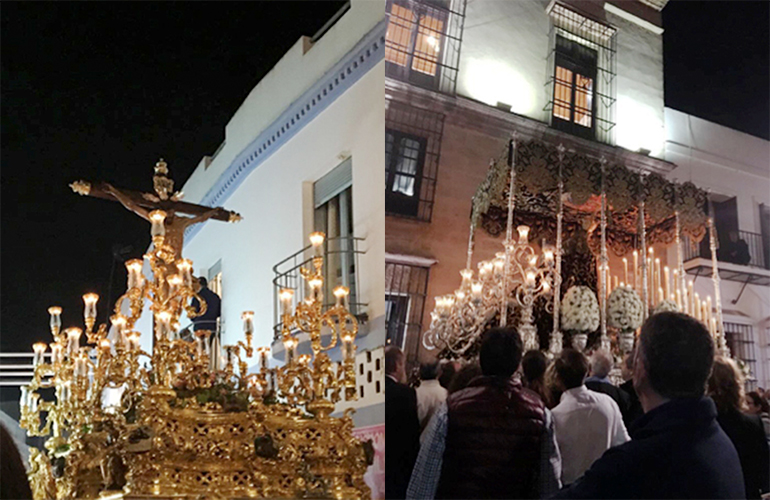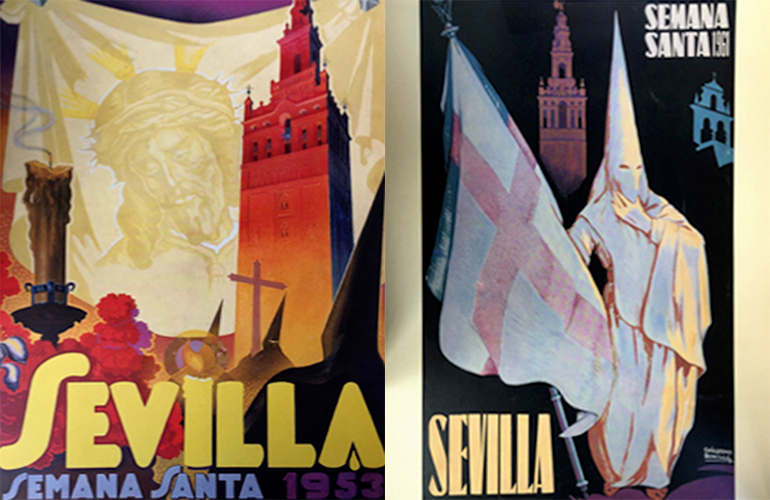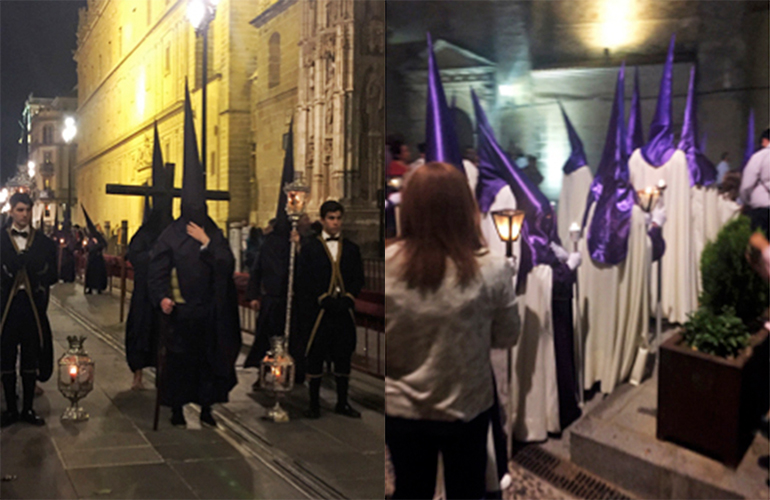Semana Santa, Easter, is one of the most celebrated weeks here in Spain. It’s a very religious week for most people to mourn the death of Jesus Christ. Celebrations fill the streets with ancient, beautiful traditions and history. I’m glad I got to celebrate Easter while studying abroad in Spain. It was a very eye-opening experience!
Palm Sunday Traditions
The first day of Semana Santa is el Domingo de Ramos, or Palm Sunday. On the morning of el Domingo de Ramos, those who want to go to Church to celebrate the day when Jesus was welcomed into Jerusalem by people putting palm leaves on the ground in front of him. Here in Spain, when going into church you either carry a palm branch or an olive branch that is later blessed by the priest. Usually, the girls have a decorated branch.
Good Friday Customs
On el Viernes Santo or Good Friday, meat is not eaten by those who practice Christianity seriously. Usually restaurants will serve fish or vegetables as their specials for the day. My host grandmother makes a traditional Semana Santa food called Moje de bacalao that is fried fish and vegetables soaked in a vinegar and orange broth. I am glad I tried it, but I had to agree with my host siblings that as delicious as it looked, it wasn’t the best tasting thing I’d ever had. On Easter Sunday, lots of meat is eaten, especially lamb.

This is a picture of lobsters from a restaurant we went to on Good Friday. The special meal of the day was fresh lobsters.
Easter Celebrations
The main Semana Santa tradition, that as an American scared me at first, are the processions. The processions take place in the streets throughout all of Spain. It’s a way to show the story of how Jesus Christ died.

These giant, HUGE, and super heavy floats, pasos, are carried by men called Los Costaleros on their neck and shoulders. There is a cloth hanging down from the float so you can’t see los costaleros carrying it. The floats are so heavy that the men carrying them have to practice for months before Semana Santa to make sure their rhythm and speed lines up. They also have to wear a cushioned hat/neck pad called a costal to protect themselves from the weight of the float.
The floats are often gold or silver and have candles and flowers on them. There are usually at least two floats in each procession, one with the Virgin (there are different Virgins in each town) and one with Jesus Christ.

Semana Santa Processions: A Cultural Shock
There are two other main parts of the processions, the marching band and los nazarenos. Los nazarenos wear a full body veil that covers the face called an antifaz and cone cap called a capirote. Both are strikingly similar to the outfit that members of the KKK in the USA wear. It really freaked me out because I thought they were somehow related to the KKK, and seeing everyone support and enjoy it was really scary.
They wear these costumes to cover their faces so they can remain anonymous and concentrate on praying in a peaceful way. Los nazarenos either carry a wooden cross or a long candle. Usually the little kids watching the procession will collect the melting wax from the candles and make giant wax balls. People explained to me that it’s a joyful thing and not related to the KKK whatsoever. In fact, the KKK supposedly copied the costume from these processions.
Most people I spoke with didn’t even know the KKK was a thing, or why I was freaked out, which was super weird because they just don’t have the same history.

This is the procession in my town. As you can see, there are different colored outfits in each procession.
I took this video of a procession we saw in Huelva. As you can see, they are carrying the float of Jesus Christ.
Things Aren’t Always as They Seem
Semana Santa was a learning experience for me, along with a little bit of culture shock. I was floored to see the cone cap and veil portrayed as a good thing and something the people here considered to be beautiful. Because for me it’s an outfit related to horror and evil. Things aren’t always as they seem, in this giant world of ours. I am so happy to have experienced this holiday and all of its traditions in the typical Spanish way, right alongside Spaniards.
There is so much to learn and so much to experience here on this crazy journey in a new culture. Having an open mind and attitude is the key!

Leave a Reply